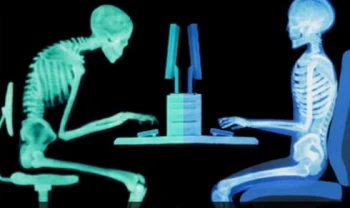
Understanding Head Whiplash
Whiplash type injuries are also known as cervical acceleration-deceleration injuries (CAD) and are extremely common in motor vehicle collisions, high impact sports, and other traumas that cause a forceful movement of the head and neck. A common misconception about whiplash is that you must hit your head to sustain a whiplash injury. This is untrue, and whiplash-type injuries have been reported following trauma to the torso as well (such as tackle football).
Whiplash injuries occur when a rapid movement of the head and neck occurs with enough force to overcome the stabilizing tissues of the cervical spine (neck region) including ligaments, joint capsules, fascia, and muscles. The head and neck region is an extremely moveable part of the spine, and when it forcefully changes direction with momentum, it is likely to withstand several layers of damage. Interestingly, studies have shown that the severity of the injury is not well correlated with the level of disability later in life. This means that even minor whiplash injuries have the potential to produce long-term pain and limitations without appropriate treatment.
Older individuals and individuals with low back pain are more likely to have a worse recovery from whiplash injuries due to decreased flexibility and integrity of the spine.
Head Whiplash Symptoms
There are a wide variety of symptoms that are likely to develop after a head whiplash injury. Often the initial symptoms in the acute phase (0-6 weeks) include:
- Neck pain
- Stiff neck
- Headache
- Back pain
- Concussion
Research has shown that there are a host of other long-term symptoms that develop in patients who have sustained whiplash injuries. These symptoms are more likely to linger 10+ years later including:
- Pins/needles in the hands/arms
- Dizziness/vertigo
- Migraine headaches
- Chronic neck pain
- Ringing in the ear / Meniere’s Disease
If you experience these types of symptoms and you have experienced a whiplash injury in the last 10+ years, you may be a candidate for upper cervical care, a focused area of chiropractic care that specializes in correcting the alignment and stability of the neck.
Head Whiplash Causes
The vast majority of head whiplash injuries are caused by motor vehicle collisions (MVCs). Deployment of airbags during a collision may be responsible for whiplash due to the forceful nature of the airbag inflation. Airbags are life-saving devices that are designed to protect you from a broken neck, ejection from the vehicle, or massive head trauma. However, patients who have experienced an airbag deployment often describe it as hitting a brick wall. This amount of force is strong enough to cause a whiplash injury.
Contact sports such as football, hockey, lacrosse, and even soccer are common causes of whiplash injuries as well. The high-speed collisions that occur on the field of play, often without warning, can damage the ligaments, joint capsules, and muscles that hold and support the head and neck.
What to do About Head Whiplash
Most individuals who experience a whiplash injury will report to the emergency room or urgent care center to screen for fractures, dislocations, or more serious injuries. It is common to have x-rays, MRI’s and other various tests to confirm the extent of the injury.
Patients will generally be prescribed muscle relaxers or pain medications to alleviate the pain, and in some cases, a referral to a conventional chiropractor or physical therapist will be ordered to treat the tissues involved. Most of these treatments are focused on symptom alleviation rather than cause correction. This means that many people who undergo these treatments achieve an improvement in their symptoms, but the underlying structural injury may not have been corrected, which is the reason why 10+ years later additional symptoms and disability are very common.
Head Whiplash Causes in Adults
The most common cause of whiplash in adults is motor vehicle collisions. One important consideration for adults who suffer a head whiplash injury is the structural stability of the spine prior to the accident. A common scenario for adults with whiplash injuries is that an old spinal issue or previously asymptomatic spinal issue becomes aggravated or exacerbated following the injury. This results in several layers of injuries that overlap and contribute to the overall level of injury and disability. This is perhaps why people with prior low back pain have a worse prognosis for a whiplash injury than those without low back pain.
Head Whiplash Causes in Children
Pediatric patients (0-18) are also experiencing whiplash injuries due to motor vehicle collisions. While riding as a passenger children are likely to experience an injury as well. It is important to remember that children have less developed musculature and are effectively weaker when it comes to cervical spine strength.
Sports injuries are also a common cause of whiplash injuries in children. Whether it’s being tackled on the football field, a collision in a hockey game, or a fall on the mat in gymnastics, there are endless ways that a young athlete might experience a whiplash injury. A common topic of concern in youth sports is a concussion, mild traumatic brain injury (mTBI), and chronic traumatic encephalopathy (CTE).
Decreased strength of the cervical spine muscles is correlated with an increased risk of concussion in youth athletes. In addition, the force required to sustain a concussion is significantly higher than the force required to cause whiplash, meaning that a whiplash injury accompanies every concussion injury. For maximum recovery and a safe return to play, the cervical spine must be corrected.
Chiropractic Head Whiplash Diagnostic
For patients who have suffered a whiplash injury, whether recent or in the past, a battery of testing will be performed to determine what type of care is needed to help the patient recover and heal. Upper cervical chiropractors are very thorough in their evaluation of the head/neck junction and will perform testing to measure the extent of the injury and the individualized plan of care. Common diagnostic procedures for whiplash patients include:
- Digital x-ray or CBCT (cone beam CT scan)
- MRI
- Paraspinal thermography (nerve system testing)
- EMG (muscle activity testing)
- Postural evaluation (structural balance testing)
- Cervical spine orthopedic and neurological testing
This comprehensive testing process will help to identify upper cervical subluxation (injury to the head and neck junction from whiplash), to develop priorities for treatment, and to establish goals for recovery, to guide the long-term strategy for maintaining the progress made, and to prevent future issues.
Many whiplash sufferers note that their upper cervical chiropractic evaluation is the most thorough testing that they’ve experienced while being treated for their condition.
Chiropractic Treatment for Head Whiplash
The results of the evaluation will guide the treatment process. For whiplash patients, there is generally a minimum amount of force used to perform upper cervical adjustments and no twisting, popping, or cracking of the spine is performed. Many patients find the adjusting process to be easy, painless, and extremely effective.
Goals related to chiropractic care will be focused on:
- Improving alignment
- Restoring proper movement
- Reducing nerve irritation
- Gaining stability (not needing to be adjusted at each appointment)
- Reducing and eliminating symptoms to achieve lasting relief naturally
Not all chiropractors perform these procedures. To consult with a qualified upper cervical chiropractor, search our directory of doctors by following the link above. You may also request a consultation with one of our qualified doctors to determine if Blair Upper Cervical Chiropractic is right for you.







Leave a comment